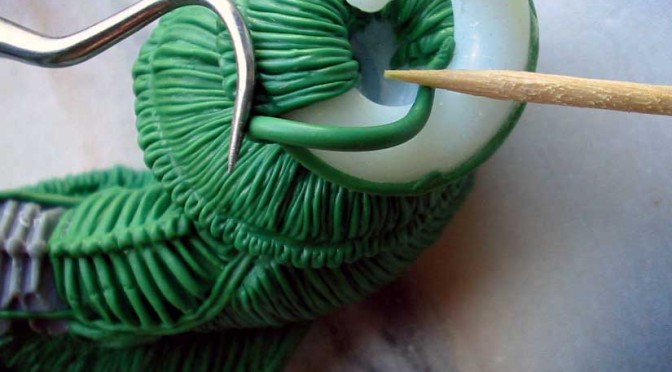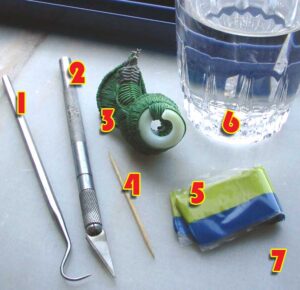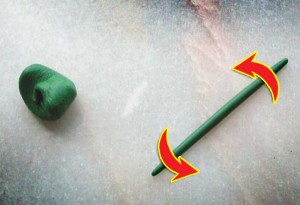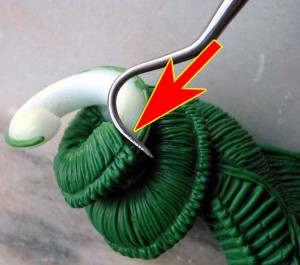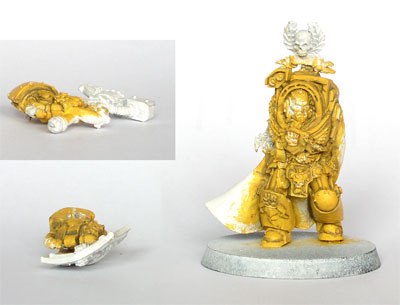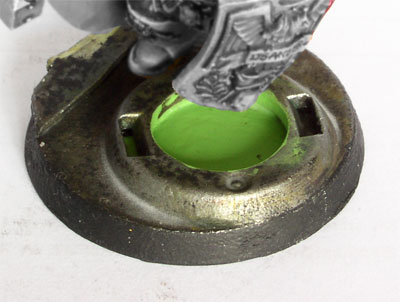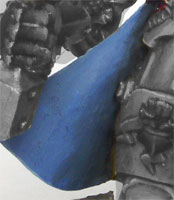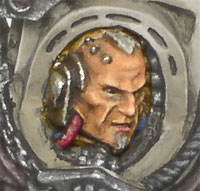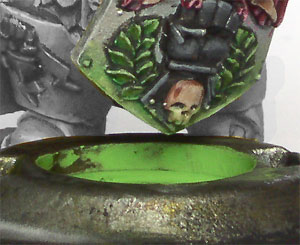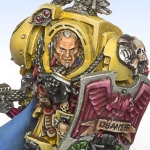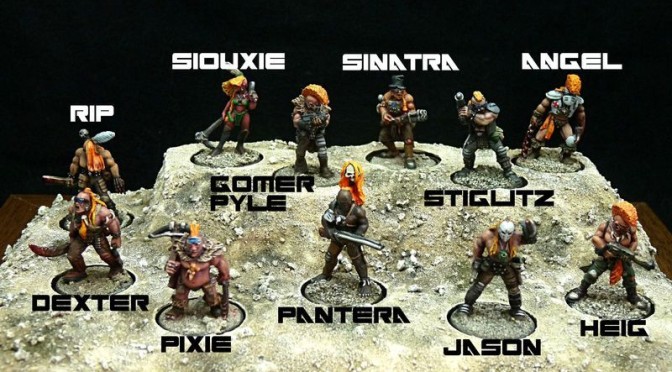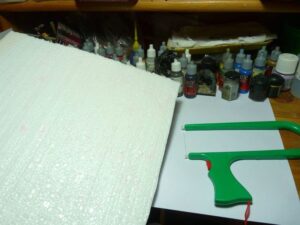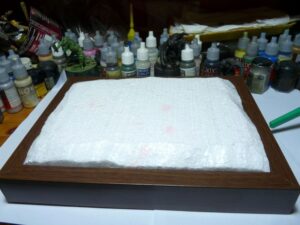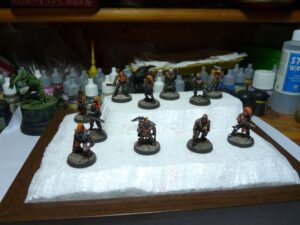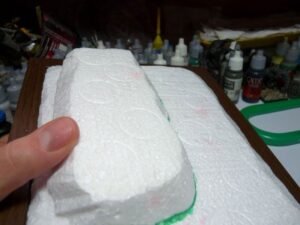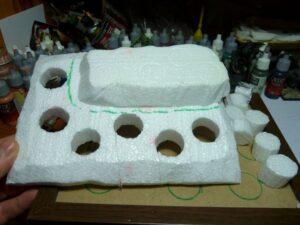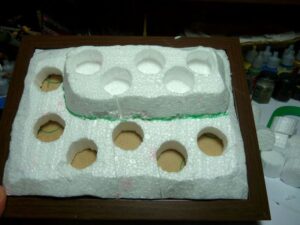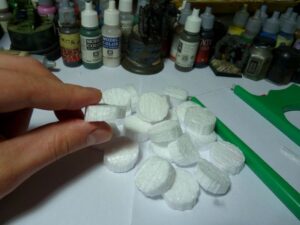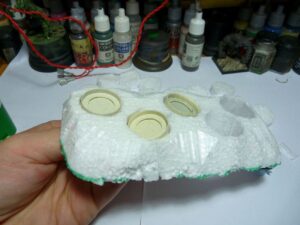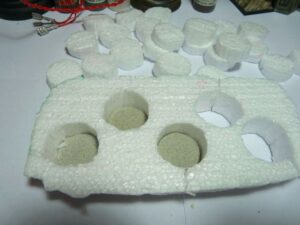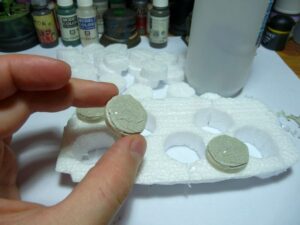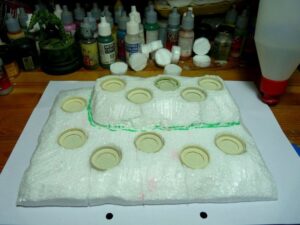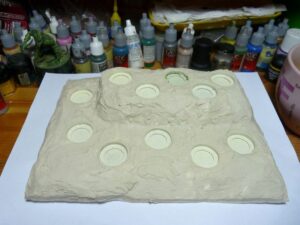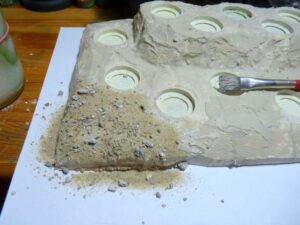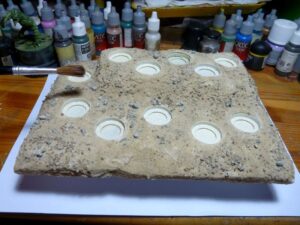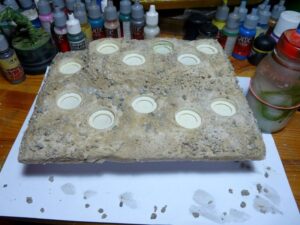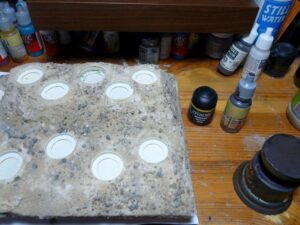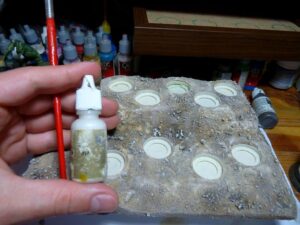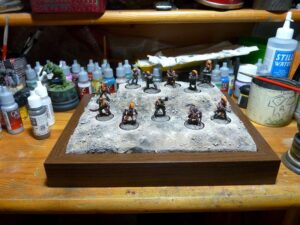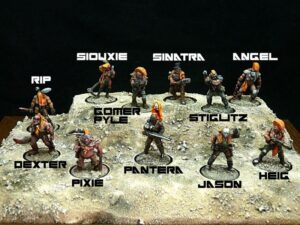Artemis was the model which won me the Femme Fatale II contest. Painting it was a big challenge for me – because of the scale and several problems I encountered. You can read about my Artemis – how I painted the miniature and what I learned from my problems. Maybe it saves you some trouble?
Introduction
Painting of Artemis was done in the same period when I painted the girl in the eggshell – just one step earlier, but also one step after the
sexy female dwarf from Hasslefree Miniatures. I may be repeating myself, but it all was a lucky coincidence at that time, or maybe I just think it was? Anyway the curtain was removed and I saw a lot of new options.
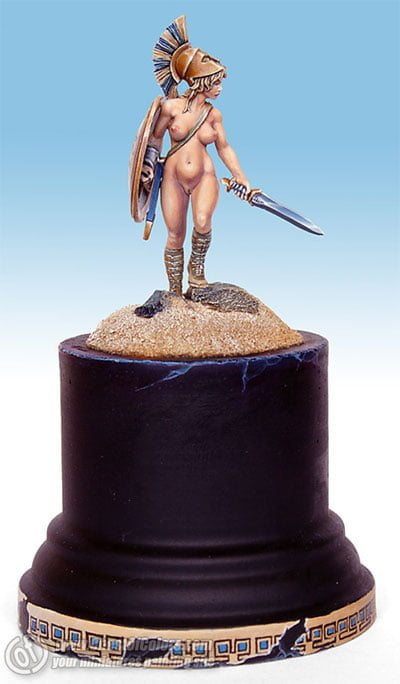
In addition to this we received some secret knowledge ;-))) acquired during a painting workshop with Jeremie “Bragon” Bonamant by our friend from Poland: Illusionrip. In the same time our website – Chest of Colors – was updated with a tutorial (by Morsi) about painting skin, which made my knowledge (acquired from Mahon and Illusionrip more complete. I learned how to “sculpt” and model shapes with colors, and even how to choose colors suitable for certain effects.
But theory is just theory, and what about practice? The dwarf was easy to improve with glazing, so I wanted to test my abilities even more. And the best model to learn painting skin is a nude model 🙂

My perfect Artermis
Artemis was still a new release, but her potential was already noticed by many painters and in a few days new versions kept popping up. I don’t think anybody will feel surprised or will mind me saying that when I visited CoolMiniOrNot in search of inspiration, I found that my perfect Artemis was already painted. Sometimes you just see a paintjob and already knoiw that it’s the perfect version and nothing better will be done with this miniature, because this is THE right paintjob. This harmony and synthesis of the paintjob and the sculpt – looking as if it was made just for that paintjob.
Of course you should know that I am talking about Fluffy’s (Ali McVey’s) paintjob. And not wanting to create a poor copy of her work, which would be too easy, I treated it as a challenge. The new goal was to find the new image for her, to put some new atmosphere into her. And it was a very difficult thing to do is fighting when you feel you already lost… As if it wasn’t enough that my painting quality was inferior, also the choice of the right mood and image for the miniature…. I hope I at least managed to create the opposite of Fluffy’s version – hers is full of power and strength, it is a real threat for the enemies, and the weapon in Artemis’ hand leaves no doubt. So I created a delicate, gentle version…. I wanted people to think “what this mite is doing here?” after seeing her.
The color scheme also had to be different, so the opposite would be a blonde, and I decided to go into yellows. This also matched the sandy base. And if Fluffy’s work was in warm colors, mine would be colder. And the blue color was added to the palette only when I was looking for a pattern for the shield and I found a painting of a plate decorated with a painting, which I later used as my source of inspiration. I recreated its colors and this decided about the colors of the whole miniature.
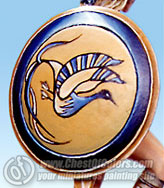
Different method
I have to admit it was the first time I wanted to create a general vision of my project before painting. Usually I approach painting pretty spontaneously, and I assume that nothing good was created with thinking alone. So when I have an idea for a part of a miniature – I just start with it, and the rest is created as I go on with painting. This work was an exception. Maybe it was like this because I had to create a totally new idea? When I start painting I usually know what mood I want to achieve and what I want to focus on. Here I was off my usual tracks, so I had to force myself to a different vision, and direct my mind to a new direction, new imagination.
NMM
Having painted the shield I still had no courage to make an attempt of painting the skin, so I started with the helmet. On the female dwarf I tried painting gold NMM without using yellow, and I wanted to change my tried method because my imagination wanted me to take another step forward and try new things. I won’t go into details, because I am to write about Artemis, not the dwarf. The helmet was a continuation of my struggle with the new method. I often read about other people’s methods and after reading I don’t follow their descriptions step-by-step, but am working my own way – only incorporating some ideas into my method. That’s what I did with the gold NMM without using yellow. I still missed the tint of yellow in my transitions, and I felt they are bland and boring.
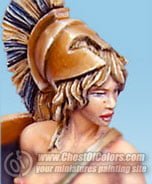
You may know that Vallejo “Cobra Leather” isn’t as yellow as Citadel Color “Snakebite Leather”. I noticed it and found my own way of achieving the effect: when I paint starting from white to Cobra Leather, I don’t blend the colors, but just apply glazes of Cobra Leather. If it’s too difficult for you, you can try painting the transition with any method of blending but leaving more highlighted space than necessary and then glazing a part of the highlight with Cobra Leather. This way gold is still yellowish and you don’t need any extra color for this. That’s how I painted the helmet and only now I am bold enough to paint a part of a miniature with glazing alone.
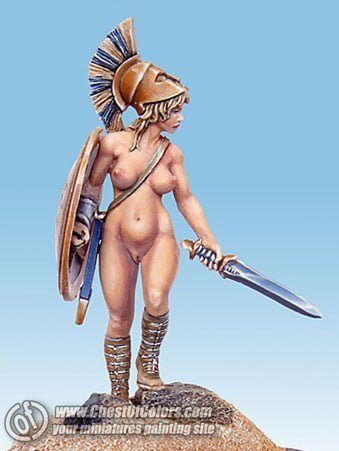
Problems with the skin
While painting the skin I noticed that paints were behaving in an odd way.
Overcoming this cost me much effort and stress, and you can still see traces of this fight when you compare the front and the back of the miniature. I started with the front, and I was unable to understand why I keep peeling the previous layers off when applying next layers of paint. 🙁 I was deperate and the effect was like the sediment on the surface of tea which is left for too long. Just as if the brush cracked the surface of previous layers of paint. And it really was what was going on, because I didn’t find out that my usual mix I used for thinning paints does more bad than good this time. I never experienced anything like that before, but I never used paints thinned so much before.

Generally I use a mix of distilled water and floor wax (the mix called “magic wash”) for thinning my paints, and it breaks the surface tension, improves the flow of paints, and makes painting easier. Somewhere halfway during my painting I realized what the problem was and I started using water alone. When you’re painting with glazes you don’t want them to create additional “layers” but to change the color of previous layers. It’s like painting with watercolors, so when you add pure water there’s nothing to crack.
Now it went faster and much neater! I didn’t have any bigger problems with placement of lights and shadows. First I checked their placement by keeping the miniature under a lamp, and then I stubbornly refused to add more contrast. Now I think that it’s this way when somebody doesn’t feel too sure about their abilities in something, that they don’t want to pay too much attention to it. And I am still learning to achieve this strong effect of a model emerging from darkness. It’s another challenge for me, and I am preparing for it.
The Base
But let’s return to Artemis – I think there’s still something I should put in words, something which usually is very controversial and I would like to explain in this article. What I am talking about is the base. I heard many different opinions on this subject. I must confess I didn’t think about it too much because in my imagination it was immediately tied with the whole concept and I couldn’t imagine that Artemis and the base might not create a feeling of integrity. The shape of the column was more important to me than its size, because it just belonged to the subject. Initially I wanted to paint it in a marble pattern, but Mahon told me that the column shouldn’t attract too much attention, as this would distract from the miniature. Probably he was right, so I chose to leave the column almost totally black. I just added a partial pattern and some cracks on the surface, because I couldn’t resist painting such an inspiring block.


Final words
I hope you don’t mind not finding any suggestions as for the order in which I painted the miniature here. Especially in the case of the skin it was simply impossible, because – just as it often happens with the first and unsure steps – my actions were not fully considered and studied, but more chaotic and uncertain…
I wish you prolific painting with no fear of entering unknown regions of this hobby 😉


